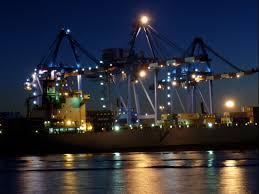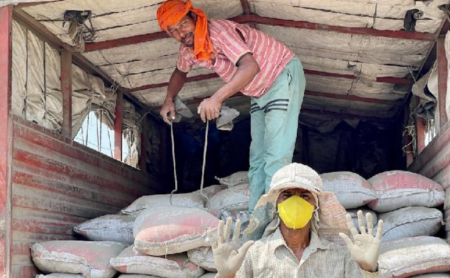As 2025 reshapes the global order, India navigates geopolitical tremors, trade shifts, and economic uncertainties with strategic foresight—emerging as a resilient force amid evolving alliances, energy realignments, and digital trade transformations.

India’s strategic agility defines its rise amid global political shifts
2025 has emerged as a year of global and domestic political shifts, prompting India to strategically balance growth opportunities with persistent challenges.
I. India amid global political turmoil
- Donald Trump’s return to the US presidency: Renewed “America First” policies lead to trade uncertainty, calls for US tech companies to prioritise US hiring, and reconsideration of overseas manufacturing.
- Rise of populism & coalition governments: Weakened single-party dominance globally and in India (National Democratic Alliance post-2024 elections).
- Persistent geopolitical realignments & economic discontent: Ongoing instability (Ukraine war, Middle East conflicts), high inflation, job stagnation, and uneven economic growth fuel global dissatisfaction.
Trade tensions fuel innovation as India diversifies its global partnerships
II. Opportunities and India’s Strategy:
- Enhanced trade partnerships & supply chain diversification: US-China trade tensions lead to increased investments and manufacturing shifts to India.
- Robust export growth:
- Total Exports (Merchandise + Services) (Apr-Jun 2025): $210.31 billion (5.94% YoY growth).
- Overall Trade Deficit (Apr-Jun 2025): Narrowed to $20.32 billion (9.37% YoY decrease).
- Landmark Free Trade Agreements (FTAs):
- India-UK FTA (Signed July 24, 2025): Provides 99% duty-free access for Indian exports to the UK. Projected to double bilateral trade to ~$120 billion by 2030.
- India’s gains: Duty-free access for marine products (from 20%), textiles (from 12%), and processed food (99.7% items duty-free). Projected >20% boost in Indian agricultural exports to the UK in 3 years.
- Consumer Benefits: Tariffs on British whisky reduced from 150% to 75% (initially), then 40% (over 10 years); car duties reduced from >100% to 10%.
- India-EFTA TEPA (Implementation October 2025): $100 billion investment commitment over 15 years ($50 billion in the first 10 years), estimated to generate ~1 million new direct jobs.
- India-UK FTA (Signed July 24, 2025): Provides 99% duty-free access for Indian exports to the UK. Projected to double bilateral trade to ~$120 billion by 2030.
- Logistics modernisation: PM Gati Shakti drives efficiency.
- Sustained GDP growth: India remains one of the fastest-growing large economies, projected to grow 5.9% to 6.5% for 2025-26, making it the 4th largest global economy.
- Growing trade relations with Russia:
- Record Bilateral Trade (FY 2024-25): $68.7 billion (India is Russia’s second-largest trading partner). Target $100 billion by 2030.
- Energy cooperation: Crude oil imports from Russia surged to ~2.08 million bpd by June 2025 (~40% of total crude imports).
- Defence: Russia remains a significant defence supplier (~36-47% of India’s defence imports). The S-400 missile system performed well in the May 2025 India-Pakistan war.
- Connectivity: The Chennai-Vladivostok maritime corridor improved. Free trade talks with the Eurasian Economic Union (EAEU) are set for 2025.
III. India’s challenges and headwinds:
- Economic growth moderation & unemployment: Growth decelerated; the unemployment rate was 5.6% in June 2025.
- US tariff escalation (April 2025): The US imposed a 26% average tariff on most Indian goods (a flat 25% on specific sectors). The US accounts for more than 18% of Indian exports, risking billions in losses.
- Global economic slowdown & currency headwinds: The WTO/IMF warn of global trade contraction; the rupee experienced all-time lows due to portfolio outflows.
- Challenges in Russia trade: Western sanctions complicate payments and logistics for Indian exports.
- Regional conflict: The India-Pakistan conflict (May 6, 2025) halted a $10 billion annual trade exchange.
IV. India’s Strategic Response: A Multi-pronged Approach:
- Aggressive government policy & digital transformation: Prioritising infrastructure investment, digital transformation, and policy continuity. Foreign Trade Policy (FTP) 2025 shifted to a dynamic, digital framework.
- Diversification of trade partners: Amplified foreign policy outreach to sign new FTAs (UK, EFTA, planned EAEU talks) and diversify markets.
- Strategic BRICS engagement: The 2025 BRICS Summit expanded to 11 members, covering ~40% of global GDP. Focus on intra-bloc trade, localised supply chains, and payment systems (BRICS Bridge, BRICS PAY) to reduce US dollar reliance.
- India’s goods trade with BRICS (Jan–June 2025): Estimated $155 billion (up ~11% YoY).
- Poverty alleviation: An estimated 171 million people were lifted out of extreme poverty over the last decade (PM Jan Dhan Yojana, Ayushman Bharat).
- Energy transition: A record 22 GW of renewable energy capacity was added in H1 2025 (a 57% YoY jump).
- Climate policy: Greenhouse Gas Emission Intensity Target Rules, 2025 (GEI), effective as part of the Carbon Credit Trading Scheme (CCTS), setting emission goals for high-emission sectors.
V. Bilateral relations in focus:
- United States (US)-India relations:
- Strategic & tech: “U.S.-India COMPACT” and “U.S.-India TRUST” (Feb 13, 2025) for defence tech, procurement, and resilient supply chains (AI, semiconductors, critical minerals).
- Trade negotiations: Engaged in a Bilateral Trade Agreement (BTA) by Fall 2025, aiming to double trade from $191 billion to $500 billion.
- Mobility impact: Stricter H-1B visa rules and SEVIS record terminations for Indian students (April 2025), though many were reinstated in May.
- France-India relations:
- Strategic & AI: Purchased 26 Rafale fighter jets (April 28, 2025). Co-chaired the “AI Action Summit” (Feb 2025), issuing the India-France Declaration on AI. France announced a €109 billion AI investment.
- Economic ties: Bilateral commerce FY 2023: $13.4 billion; France invested $10.54 billion in India.
- People-to-People: Indian students in France are expected to reach 10,000 in 2025 (target 30,000 by 2030).
(Sources: Afleo.com, DeVere India, PIB.gov.in, Plutus IAS, YouTube, AngelOne.in, Economic Times, TradeImex.in, BRICS.br, IndiraTrade.com, SleepyClasses.com, VisionIAS.in, IMF.org, IndianEmbassy-Moscow.gov.in, TNPSC Thervupettagam, B2B Export Import Academy, IndiasWorld.in, GKToday.in, DrishtiIAS.com, Al Arabiya English, IndBiz.gov.in.)











